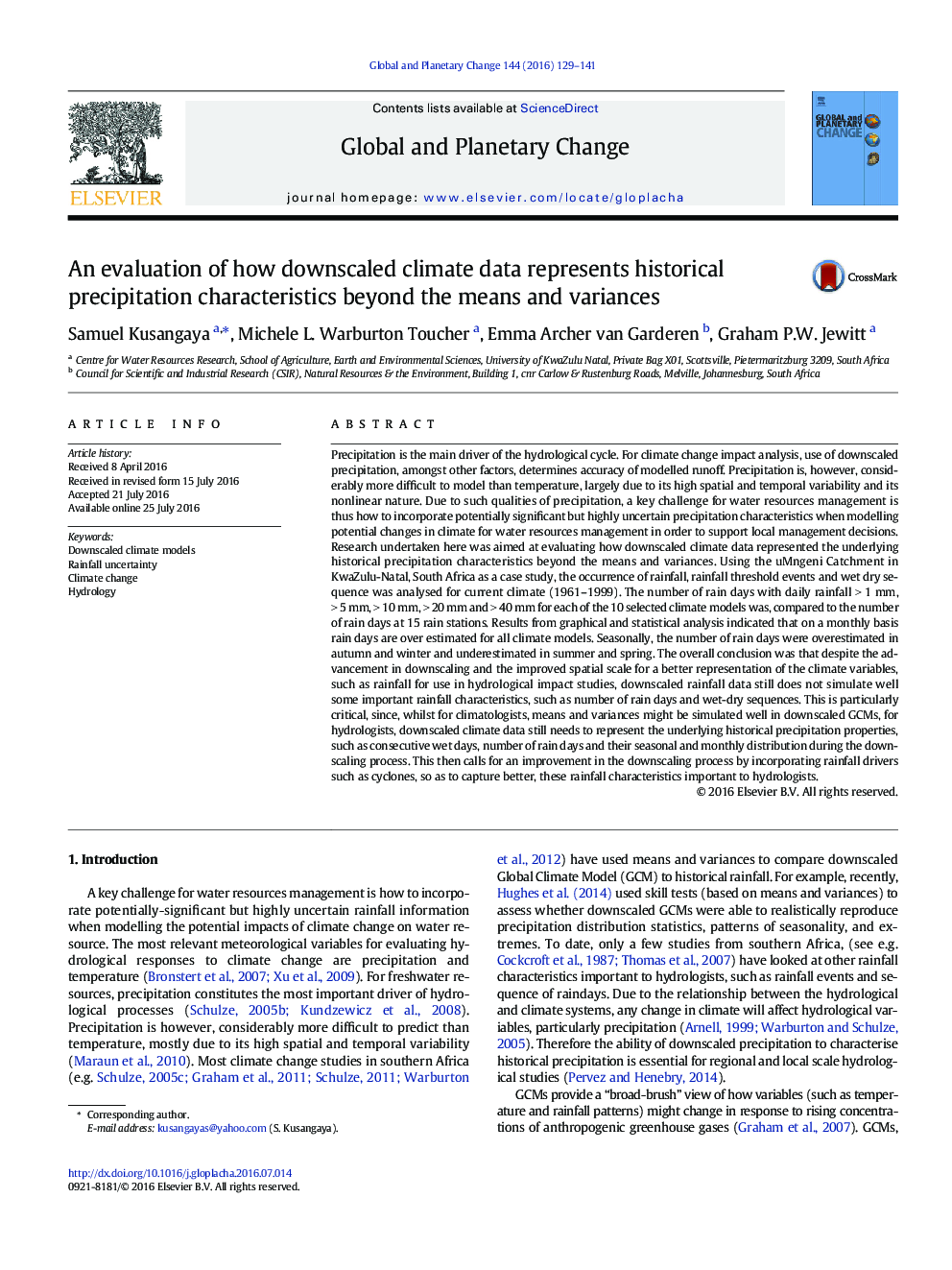| کد مقاله | کد نشریه | سال انتشار | مقاله انگلیسی | نسخه تمام متن |
|---|---|---|---|---|
| 4463275 | 1621638 | 2016 | 13 صفحه PDF | دانلود رایگان |
• Downscaled GCM rainfall was compared to historical rainfall using the number of raindays and consecutive wet days.
• Most downscaled GCMs satisfactorily simulated historical rainfall mean and variance.
• High rainfall events were well simulated whilst raindays and low rainfall events were poorly simulated.
• Consecutive wet days were poorly simulated in summer and spring but were well simulated in winter and autumn.
• Downscaled rainfall data still does not capture well some important rainfall characteristics important to hydrologists.
Precipitation is the main driver of the hydrological cycle. For climate change impact analysis, use of downscaled precipitation, amongst other factors, determines accuracy of modelled runoff. Precipitation is, however, considerably more difficult to model than temperature, largely due to its high spatial and temporal variability and its nonlinear nature. Due to such qualities of precipitation, a key challenge for water resources management is thus how to incorporate potentially significant but highly uncertain precipitation characteristics when modelling potential changes in climate for water resources management in order to support local management decisions. Research undertaken here was aimed at evaluating how downscaled climate data represented the underlying historical precipitation characteristics beyond the means and variances. Using the uMngeni Catchment in KwaZulu-Natal, South Africa as a case study, the occurrence of rainfall, rainfall threshold events and wet dry sequence was analysed for current climate (1961–1999). The number of rain days with daily rainfall > 1 mm, > 5 mm, > 10 mm, > 20 mm and > 40 mm for each of the 10 selected climate models was, compared to the number of rain days at 15 rain stations. Results from graphical and statistical analysis indicated that on a monthly basis rain days are over estimated for all climate models. Seasonally, the number of rain days were overestimated in autumn and winter and underestimated in summer and spring. The overall conclusion was that despite the advancement in downscaling and the improved spatial scale for a better representation of the climate variables, such as rainfall for use in hydrological impact studies, downscaled rainfall data still does not simulate well some important rainfall characteristics, such as number of rain days and wet-dry sequences. This is particularly critical, since, whilst for climatologists, means and variances might be simulated well in downscaled GCMs, for hydrologists, downscaled climate data still needs to represent the underlying historical precipitation properties, such as consecutive wet days, number of rain days and their seasonal and monthly distribution during the downscaling process. This then calls for an improvement in the downscaling process by incorporating rainfall drivers such as cyclones, so as to capture better, these rainfall characteristics important to hydrologists.
Journal: Global and Planetary Change - Volume 144, September 2016, Pages 129–141
